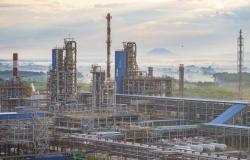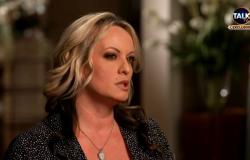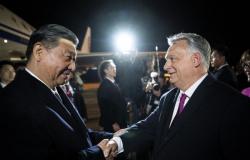After the US Congress this week approved a long-delayed $61 billion in military aid to Ukraine, Russia argued that advanced Western weapons would not change the situation on the battlefield, the quoted source noted.
The spokesman of the Kremlin, Dmitry Peskov, conveyed that the new American aid to Ukraine will not change the situation on the front. “The Russian armed forces are improving their positions at the front… The money allocated and the weapons that will be supplied will not change this dynamic,” Dmitry Peskov told reporters.
According to the FT, more than at any time since Vladimir Putin ordered the invasion of Ukraine two years ago, the Russian president seems “very confident and happy” in recent months, a person who knows him well said. “Let’s see if military aid will change that.”
A new Russian offensive, “expected in May or June”
While Ukraine waited for Western aid and struggled to rotate its exhausted troops, Russia took advantage of its superior firepower and made gradual advances on the front line.
Two senior Ukrainian intelligence officials described Russia’s current offensive along key frontline areas and missile and drone strikes on Kharkiv and other key cities as a first step before a larger offensive operation.
Officials have said they expect Russia to launch another large-scale offensive in late May or June.
However, the question arises about the impact of this offensive, considering that, now, Kiev will have some help, after the vote in the US Congress.
According to Western defense officials and analysts, Ukraine will be able to expose, with American help, Russia’s inherent flaws in trying to overwhelm it on the front with low-quality ammunition and a large but poorly trained army.
A Western official said that while Russia may be making some tactical progress on the front line, it remains an ineffective army characterized by old equipment and poorly trained soldiers and will not “overwhelm” Ukraine, he added.
“In February 2022, Russia had a much better equipped and trained military,” the official said, referring to Russia’s initial invasion and subsequent landing in northern Ukraine. “I just don’t see her getting any better now.”
“The aid will allow Ukrainian forces to defend their positions”
After the initial blitzkrieg failed, Russia began rolling into Ukraine, betting on quantity over quality on the battlefield.
Russia fires five shells for every return salvo fired by Ukrainian forces, while the ratio is even higher at some points along the front line, says Dara Massicot, a senior fellow at the Carnegie Endowment for International Peace who studies the Russian military .
“The (American – no) aid will not negate Russian advantages this year, but it will allow Ukrainian forces to defend their positions with counter-battery fire and can be used to slow or stop Russian advances,” Massicot said.
Although Russia’s defense spending has reached a record high, its firepower is not reflected in significant progress on the front. Russia’s arms industry has increased production several times over, with factories working around the clock, according to officials.
Sergei Chemezov, the head of Rostec, Russia’s state defense conglomerate, said last November that Russia was producing 2.5 times more artillery and multiple launch systems than before, while production of some types of ammunition had increased over 60 times.
However, these numbers simply mask Moscow’s inability to turn this firepower into significant progress on the front, and Russian experts say it could only do so with more advanced weaponry.
Western sanctions have made it harder for Russia to obtain the components it needs for drones, guided bombs and high-precision missiles, forcing it to rely on lower-tech weapons it can more easily mass-produce, according to Ruslan Pukhov, head of the Center of Strategy and Technology Analysis, a defense think-tank in Moscow.
“The most decisive systems on the battlefield in Ukraine depend directly on sanctions. Their intensification means that leaders at all levels must think creatively and understand the main trends and likely outcomes of the war,” says Pukhov.
Despite Moscow’s larger arsenal, its military “does not have a radical advantage over Ukraine in terms of artillery and ammunition. At least the people fighting on the Russian side don’t see it,” he added.
The enormous rates of fire fired by Russia cannot be sustained by the defense industry
Even though Russia’s arms industry has increased production several times, this is not enough to sustain the enormous rates of fire that Russia poured into Ukraine in the first six months of the war, says Pavel Luzin, a senior researcher at the Center for European Policy Analysis, based in Washington.
Russia fired up to 60,000 shells per day before the fall of 2022, an amount that has fallen to about 10,000 per day and includes deliveries from North Korea and Iran. These lower firing rates reflect how the intensity of the battle exceeds what Russia can restore, even at these higher production levels, and prevents a more significant advance.
Russia would need to produce 3.6 million shells a year to sustain its current firing rate, according to a report released this week by the Center for Strategic and International Studies.
However, the Ministry of Defense has admitted that it can only produce at most half of the 4 million 152mm and 1.6 million 122mm projectiles that Putin’s military estimates it needs to break the threshold .
And as Russia continues to fire more shells, it wears out its artillery barrels faster than it can produce new ones, forcing it to replace them with Soviet-era barrels.
“Kyiv’s most obvious problem”
American aid does not address what Ukrainian and Western officials say is Kiev’s most obvious problem: its inability to cope with the enormous numbers of people Russia has called up to fight.
Christopher Cavoli, NATO’s supreme allied commander for Europe, told a Senate Armed Services Committee hearing in April that Russia was recruiting 30,000 soldiers a month, bringing its front-line troops from 360,000 a year ago to 470,000.
To recruit these men, the military offers financial incentives, including salaries starting at 200,000 rubles, five times the average salary in some of Russia’s poorer regions, and bonuses ranging from 300,000 to one million rubles, according to a Estonian Foreign Intelligence Service report.
Soldiers can receive additional bonuses for their deeds on the battlefield or for being wounded, while their families can receive generous payouts if they are killed in battle. Those prospects are not far-fetched: 315,000 Russian soldiers have been killed or wounded in the war, Cavoli said, adding to pressure for the military to rebuild its units.
This approach allows Russia to attract enough recruits from among people for whom the fight is financially attractive, while avoiding mobilization, a step that caused hundreds of thousands of people to leave the country in the fall of 2022.
“The main approach now is to ‘buy blood’ among the lower classes in Russia,” said Luzin of the Center for European Policy Analysis.
However, new offensives would require Putin to announce a new round of mobilization, said Massicot of the Carnegie Endowment for International Peace. “If the Kremlin has ambitions for Kharkiv, or something even more difficult, like southern Ukraine, then it will have to generate a very large force, probably well over 100,000 for both, plus equipment,” Massicot said.
Even if Russia were to recruit more people, the numbers simply wouldn’t be enough to compensate for their lack of training, Luzin said. “We all talk about mobilization, but where are the commanders, sergeants and lieutenants, who would command the mobilized soldiers?”, he concludes.
Follow us on Google News
Tags: Ukraine Awaits Assault Russia Financial Times Analysis Hope Kiev
-





